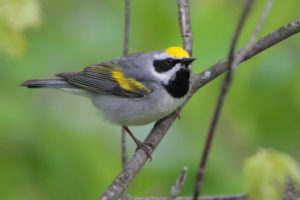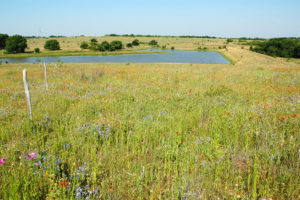
The golden wing warbler depends on thick, shrubby habitat, and the U.S. Department of Agriculture (USDA) is helping owners and managers of working lands to enhance habitat for them. USDA photo by Greg Lavaty.
By Beverly Preston, USDA Farm Service Agency
North America is filled with people who appreciate birds. Many watch them, some hunt them for food and others just value their beauty and song. Wild birds of all types are a sign of a healthy ecosystem.
That’s why it was so heartening to read in the just-released 2017 edition of the State of the Birds, produced yearly by the North American Bird Conservation Initiative, that populations of wetland birds, forest birds and grassland birds are on the upswing, and it is due to a large part to voluntary USDA programs like the Farm Service Agency’s Conservation Reserve Program (CRP).
Take for example the prairie pothole region, which stretches from Iowa through the Dakotas and into Montana and Canada. Waterfowl enthusiasts call it “America’s duck factory.” According to the State of the Birds report, the number of waterfowl in the region has increased by 37 million in 20 years, and the annual economic impact from hunting and birdwatching is an estimated $430 million. That’s a real benefit to rural America and to the economic health of the people who live there.

Ranchers Sue and Gary Price converted a portion of their cropland to a wetland and installed a riparian buffer with native plants. Wetlands minimize soil erosion and are excellent wildlife habitat and the riparian buffer acts as a filter while creating habitat for both bobwhite quail and Rio Grande turkey. (USDA photo)
Substantial benefits are evident elsewhere. For example, in Illinois, farm counties with the highest CRP sign up rates, spring bird counts for Henslow’s sparrows are now 25 times greater than before the program was instituted, and the grasslands the sparrows depend on provide $900 million in flood control, groundwater recharge and water purification services. In nearby Wisconsin and Michigan, grassland plots within crop landscapes doubled the number of grassland birds, and in doing so, increased the rates of predation of insect pest eggs by 30 percent.
To learn more about USDA programs that benefit wild birds, visit the Farm Service Agency website or your local FSA office.






One Response to Conservation Reserve, other USDA Programs, Help Bird Populations Take Flight